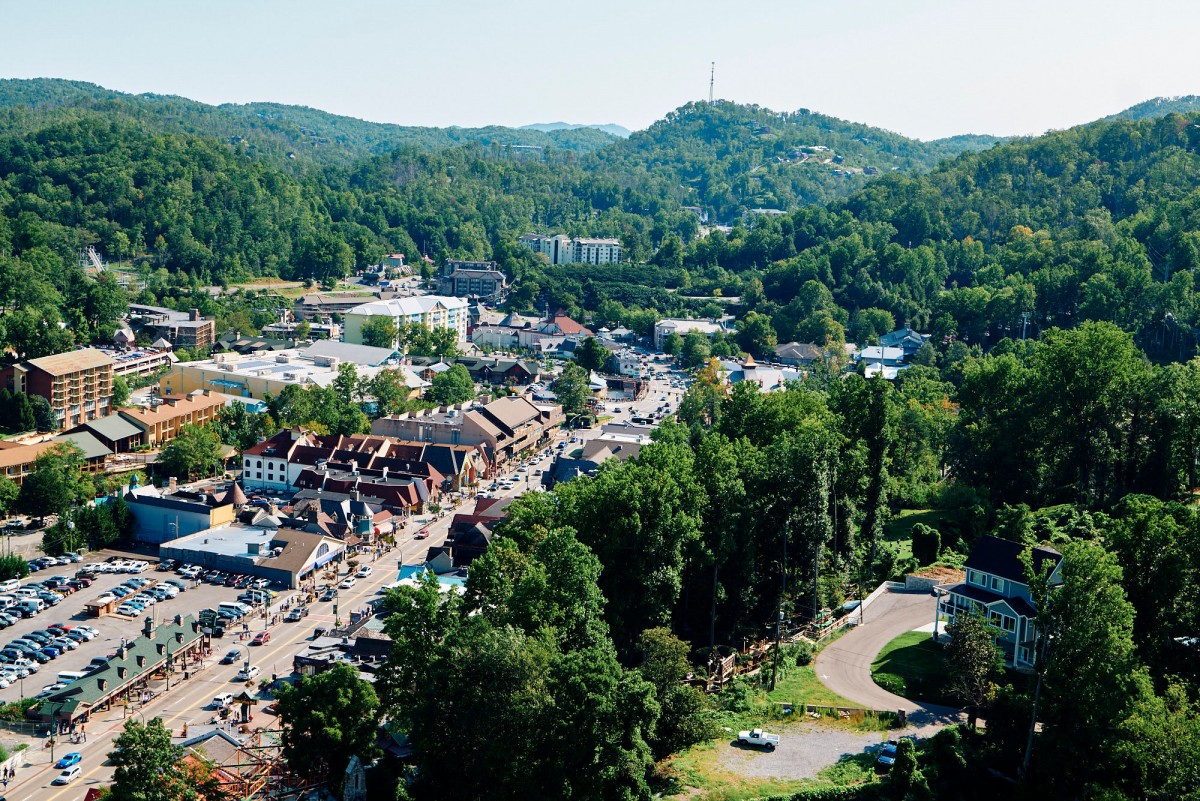Tuesday afternoon in late January and the campus of Lanier Technical College in Gainesville, Georgia, bustled with students pursuing career education, with a near-guaranteed job awaiting.
Healthcare students studied for likely jobs with Northeast Georgia Health System, while two buildings down, others attended classes in welding and automotive mechanics in the Kubota Manufacturing Applied Technology Center, likely headed for jobs with the Kubota tractor company or another of the automotive-related manufacturers in the region.
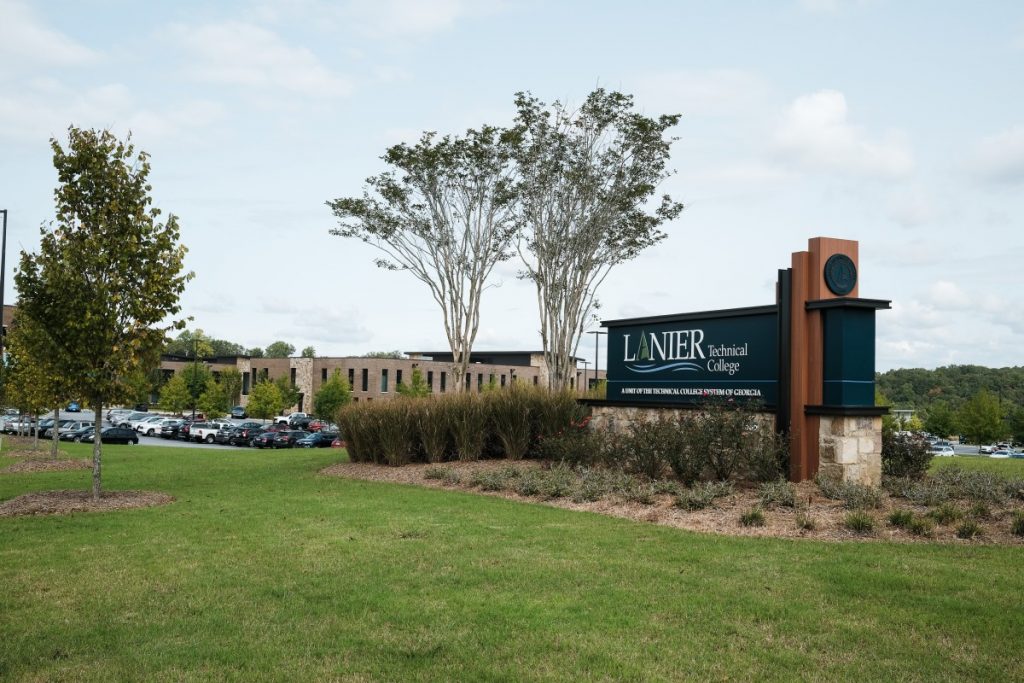
Lanier Technical College boasted a 100 percent placement rate for its graduates in early 2020, facilitated in large part by its close ties to regional employers. This tight-knit connection between the private sector and the state-run Technical College System of Georgia contributed to the explosive economic growth in Georgia over the last half-century, although the region’s free-market mechanisms — cheap labor in the absence of unions, low state investment in public welfare programs and the rise of free trade and open international markets — played an even larger role in the shift of industries from the Rust Belt to the Sun Belt.
Hall County and its neighbors in exurban Atlanta seem poised for more growth in the future, according to “The future of work in America,” a 2019 report by the McKinsey Global Institute. As one of 25 “megacities,” home to 23 percent of the country’s population, the greater Atlanta region — including the northern exurban counties at the southeastern edge of Appalachia — appears better positioned for job growth in coming decades.
Much of the rest of Appalachia is designated as “rural Americana” and “distressed Americana” by the McKinsey report, with “college-centric towns,” “trailing” and “stable” cities, and “America’s makers”— manufacturing hubs — dotted here and there. McKinsey projects that the majority of Appalachian counties will see less than 5 percent job growth through 2030, according to its “midpoint” scenario. Roughly half of Appalachian counties, concentrated in the central and northern regions, are projected to see negative job growth.
“Economic growth and the most highly educated, affluent workers are becoming concentrated in the nation’s most dynamic cities,” according to the McKinsey report. “Meanwhile, the economy seems to be leaving small towns and rural areas behind. Without targeted interventions, America’s economic and societal divides could widen in the coming years.”
The concept of technology disrupting how we work is nothing new; robots have been replacing factory workers in Appalachia and across the country for decades. More recently, however, algorithms and artificial intelligence have increasingly disrupted white-collar professional jobs. Many of the fastest-growing jobs require less than a bachelor’s degree but pay low wages with few if any benefits, wrote historian Bethany Moreton in the essay “So Goes the Nation: Southern Antecedents and the Future of Work.”
“Most times and places in the existence of laboring humanity, it wasn’t the case you had to choose between having access to your family and work,” Moreton said in an interview. Yet in today’s “gig” economy, many people still work 12 or more hours per day on part-time or contracted work and receive none of the benefits associated with full-time employment.
“It’s an insane thing that we have done with the tools made available to us,” Moreton said. “It’s the opposite of what people had dreamed of them.”
‘It Doesn’t Get More Unfree’
Hall County, Georgia, has built a diversified economy anchored by manufacturing and processing – its largest employment sector. Healthcare ranks next, with 366 healthcare providers in the region, including Northeast Georgia Health System, which employs nearly 10,000 people.
“In this region, all the roads are built on ridge lines, and those ridge lines converge in Gainesville for a 21-county region,” said Tim Evans, vice president of the Greater Hall Chamber of Commerce. “We’re the healthcare supplier for close to 2 million people.”
Roughly 40,000 people live in Gainesville, but its population grows to 150,000 during the day, largely from people commuting in to work in healthcare, Evans said. About 39 percent of Hall County’s residents commute out of the county each day, while the same percentage of its workforce commutes in.
Many of those commuters come from metro Atlanta, a 23-county region that the McKinsey report labels as a megacity. While the McKinsey report predicts the fastest job growth and most prosperity for megacities like Atlanta, it also warns of higher income inequality in these areas than any of its 12 other categories of local economies.
Hall County is counted in the report as one of “American’s makers,” given its preponderance of factories such as the Kubota plants. Yet it sits adjacent both to localities labeled as “megacity” (Atlanta) and “high-growth hubs,” and despite its status as an independent metropolitan statistical area (MSA), Hall County is tightly woven into a manufacturing belt that stretches across the South, including major automotive plants but also a network of smaller suppliers and parts-makers.
Like the megacities, Hall County sees a high degree of income inequality. Gainesville, the city at its core, has a 23 percent poverty rate, 10 percentage points higher than the national average, and comparable to rates among central Appalachia’s coal-producing counties. Gainesville consists of 40 percent Hispanic or Latino residents compared to 39 percent white, and 20 percent of residents are not U.S. citizens.
The high percentage of migratory workers in Gainesville factors into its poverty rate, said Vanessa Sarazua, founder and executive director of Hispanic Alliance Georgia, or La Alianza. Many of those workers travel to other states based on what’s in season and what jobs are available. They come to Gainesville for northern Georgia’s poultry industry, historically the region’s economic driver and still a major employer today. Constant traveling means things like school supplies often get left behind, and maintaining healthcare access becomes more challenging when you don’t stay in one place long enough to make connections. La Alianza works to facilitate those connections through community events, while also providing educational programs, such as teaching English and financial skills.
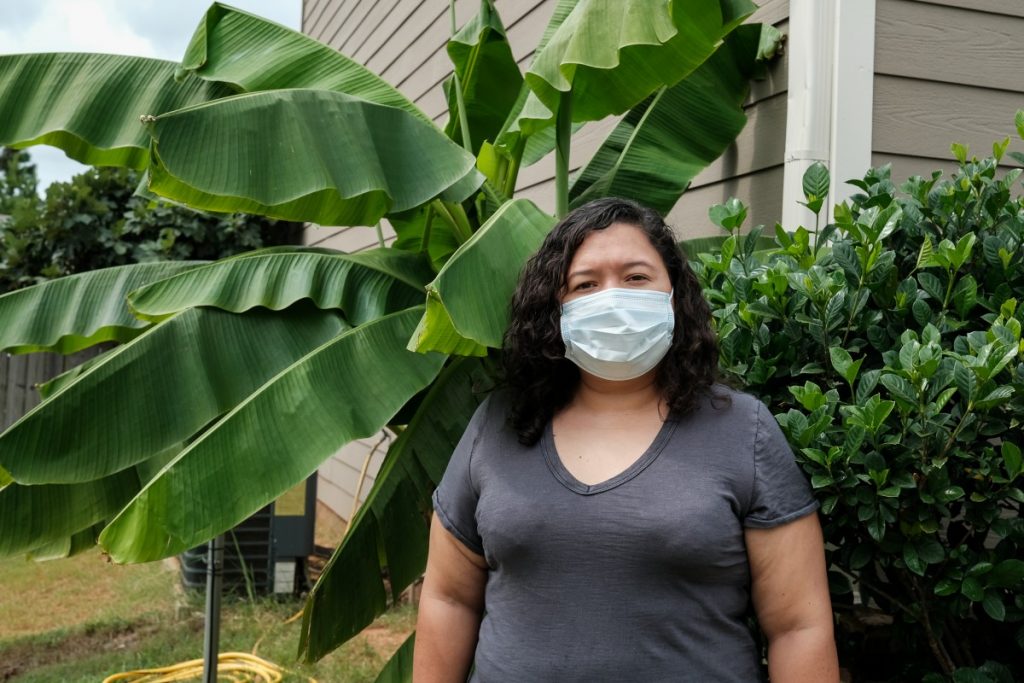
Promises of work in a poultry plant drew Maria Palacios’ parents to northern Georgia in the mid-’90s. Palacios worked in retail and as a translator in her teens, then started in the poultry industry when she turned 18 — first as an undocumented migrant, and later as the holder of a green card. Because she was bilingual, plant management sometimes used her to communicate with workers.
“On one occasion the plant manager told me to tell a worker who had gotten run over by a forklift that [the manager] wanted to take him to the hospital but he knew he was undocumented,” Palacios said, “and that if he took them, ICE [Immigration and Customs Enforcement] would show up for him.”
She said she translated, but then added for the Spanish-speaking worker that it was a lie, that the injured worker had rights, and that he could seek a lawyer to demand them.
That experience fueled Palacios’ desire to get out of the poultry industry. She scrimped to take classes at what was then Gainesville State College and now is the University of North Georgia, eventually graduating with a degree in finance. In 2018, she filed to run for state office, but was disqualified from the ballot for having only recently received her citizenship, despite living in the country her whole life. She went to work for Georgia Shift, a mutual aid and advocacy group, where she is endeavoring to help others.
Meanwhile, many members of Palacios’ family still work in the poultry industry, including her 56-year-old mother. She was working at a plant when the novel coronavirus pandemic slammed the United States in the spring.
“There were a lot of folks who chose not to go into work” in an environment where social distancing was impossible, Palacios said. “On the flipside, you had production expectations raised, so there was twice the work with half the people.”
By mid-May, some of her mother’s coworkers had died, and she was “visibly sick,” Palacios said, but despite daily temperature checks and persistent 100.4-degree temperature, “they let her work,” she said. On June 1, Palacios’s mother felt dizzy and spent the last half of her shift leaning on a wall for support. Palacios finally convinced her mother to get tested for COVID-19. Not long after, Palacios herself tested positive as well.
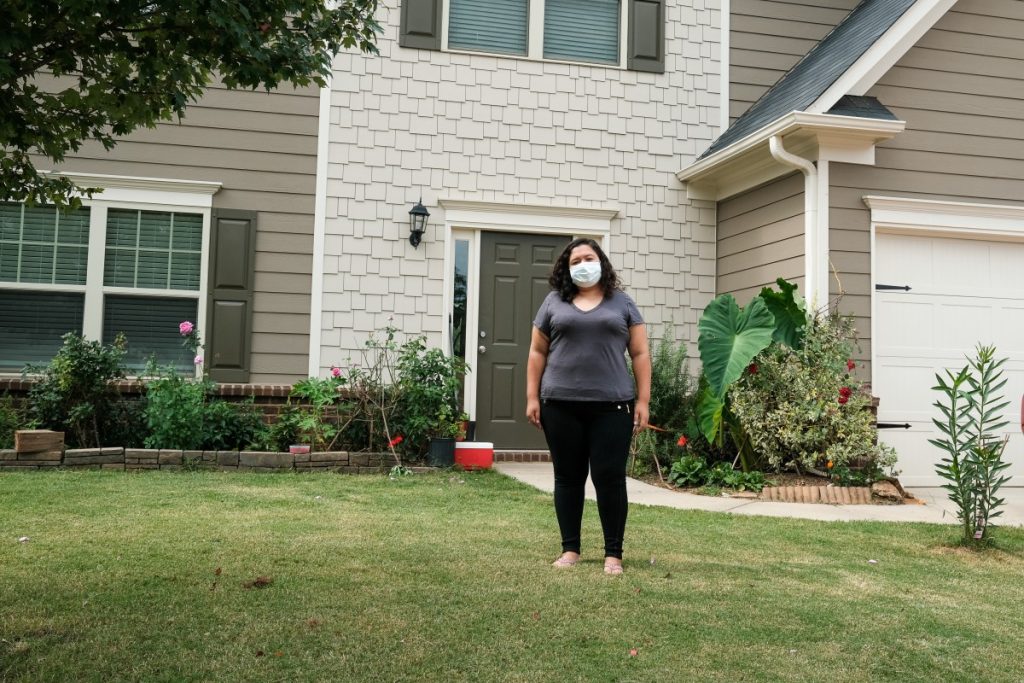
COVID-19 roared through Georgia’s poultry industry, while the economic effects of the pandemic affected the region more broadly. Hall County’s unemployment rate skyrocketed from 2.8 percent in February 2020 to 10.7percent in April, before falling to 8.0 percent as Georgia began to reopen in May.
The poultry industry represents a substantial part of the economy, not just in Gainesville and northern Georgia, but in many other parts of Appalachia. The industry has proven remarkably sophisticated in keeping labor costs low, evolving over the years to reflect changing societal conditions.
“What my research has shown is that the chicken plants are very sophisticated in figuring out how to keep labor costs as low as possible,” said Angela Stuesse, an activist anthropology professor at the University of North Carolina at Chapel Hill. “One has been to actively seek out the next most exploitable class of worker. They very intentionally try to ensure these different classes of workers don’t see each other as allies but as competition.”
After World War II, that meant relying on poor white women. As the Civil Rights movement opened up more employment possibilities for Black men and women, the poultry industry began hiring them. Then in the ’90s, as Americans’ consumption of chicken dramatically increased and unions tried to organize, poultry plants began hiring undocumented workers. Now, the industry is hiring more refugee populations and beginning to coordinate with the state to use incarcerated people.
“It doesn’t get more unfree and brings us 360 degrees back to the plantation model,” Stuesse said.
Pathways Out of Poverty
What’s old is new again, and although technological advancements are driving rapid changes in how we work, the societal model for labor remains largely the same as that of the early American Republic, and the West Virginia coal wars of 1912–21. Consistently, the system exploits workers, socializes costs and funnels profits to a relative few at the top.
The poultry industry provides Hall County’s economic foundation, employing thousands of people in low-wage jobs. When I stopped by a Gainesville office of the Compass Center, a community resource center and the region’s United Way affiliate, I was told they often referred workers in search of jobs to Fieldale Farms, a chicken processor that employs about 800 people.
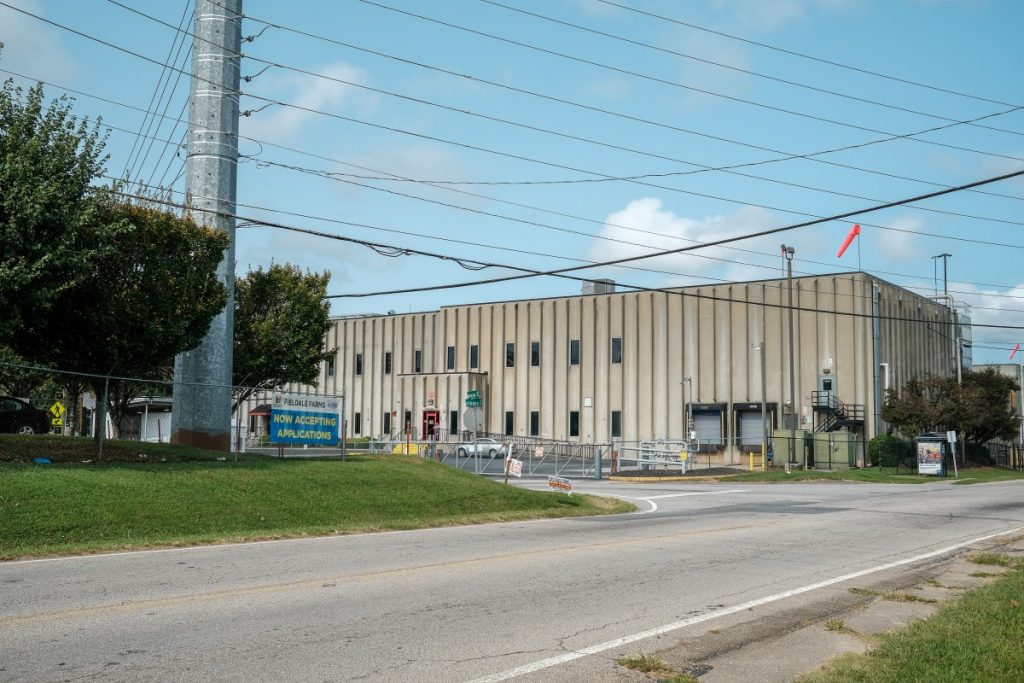
One way out of the poultry industry is through starting a business. La Alianza sponsors an entrepreneurial women’s group that meets monthly to network and share lessons drawn from experiences. Its membership includes women who previously worked in poultry but were able to leave once their businesses began to take off.
Georgia’s technical college system also plays a crucial role for workers climbing out of poverty. These colleges tend to cost less than four-year institutions, and they work closely with the private sector to provide both industry-specific programs for new students and spec training for companies.
Typically, enrollment at technical colleges goes up with unemployment and vice versa. In January, however, Lanier Tech in Gainesville saw record enrollment amid historically low unemployment rates.
“There’s a recognition that, whether you’ve already got a job or are seeking a field, skills are going to have a direct relationship with your pay and opportunities to get the job you want,” said Evans at the chamber of commerce.
At Lanier, radiology students Adilene Trango, Shannon Williams and Dawn Llanas decompressed in the lobby of the James A. Walters Allied Health Building after an exam. Trango and Williams were both in their 20s, near the beginning of their working lives, while Dawn Llanas, in her late 40s, sought a new career after a previous life as a mother and network systems manager at an office equipment corporation.
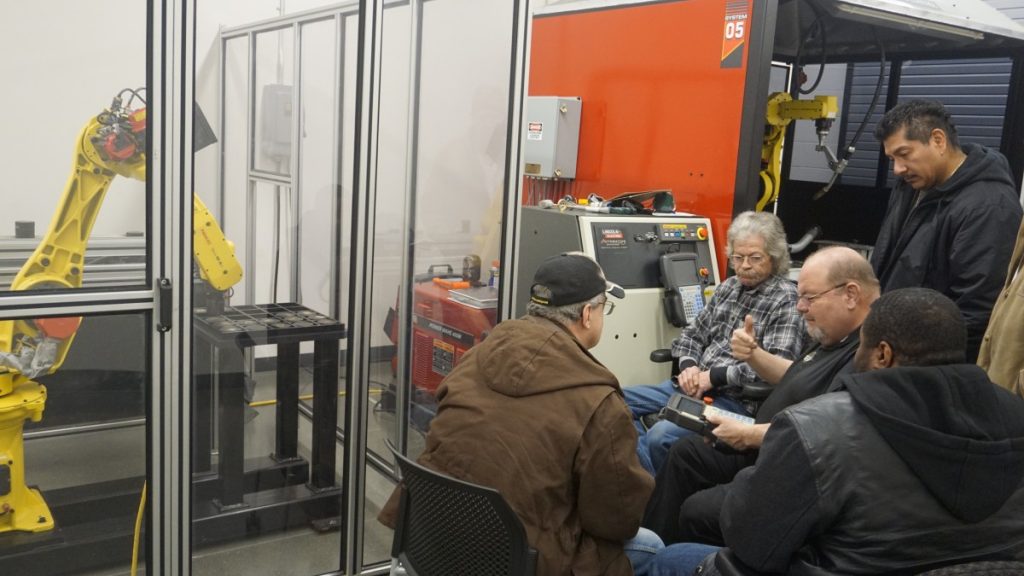
“There seems to be only expansion, not elimination [of jobs] in this field,” Llanas said. “And if technology does change and advance, we just learn it as we go train on it, and roll with the times.”
The healthcare system has risen as Appalachia’s population has aged, becoming the largest private sector employer in many communities across the region. Healthcare has replaced coal, manufacturing and many other sectors as the most consistent source of reliable jobs in most of Appalachia. Even its relative security, however, has been shaken over the last decade with the abrupt closure of rural hospitals and, more recently, mass furloughs in response to the coronavirus pandemic.
Lanier’s ties with industry go much deeper than healthcare. In one building, Lanier instructor Joey Watkins trained a maintenance crew from a local glass manufacturer on robots.
“Today is moving and basic programming functions of these robots,” said the crew supervisor. “We have four, a little bit bigger than this, same brand. We’re picking up hockey pucks here. Where we work, we pick up big sheets with it and move it from one location to a conveyor.”
The session provided a crash course in computer programming — enough for them to operate the robots, and perhaps a foundation to pursue further training if they’re so inclined. For these workers, the robots represented not their replacements, but an additional skillset to be learned.
That ‘Family’ Feeling
Kubota spent $1 million for Lanier’s Kubota Manufacturing Applied Technology Center, which trains students in welding, metal fabrication and other skills that are important for working in its Georgia factories, including two less than a mile away from campus that employ about 1,700 workers.
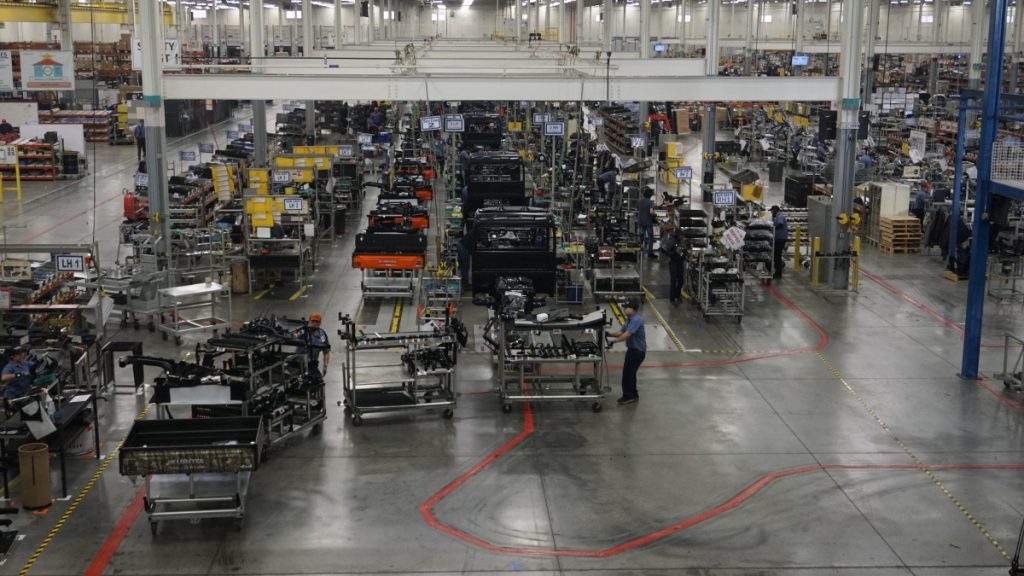
Although it makes tractors, utility vehicles and mowers, Kubota easily fits into the South’s belt of automotive manufacturing plants, down to its Japanese “lean-production” model. From its “just-in-time” supply chain to a distribution system in which products roll off the line and almost immediately out the door to dealers, Kubota’s factories are designed to minimize wasted space and time in pursuit of efficiency. Robots chiming the notes of “Mary Had a Little Lamb” crawl on a predetermined track to deliver parts and tools throughout the factory floor, while the welding section is given over to more robots that emit showers of sparks behind opaque screens.
Robots are changing not just Kubota’s factory floor, but its products.
“We can now put auto steering on our equipment, which allows the customer to spend more time operating the sprayer or planter or whatever, without the fatigue of operating and having to drive and manage everything,” said Todd Stucke, Kubota’s senior vice president of marketing, product support and strategic projects. Other technology collects data, allowing farmers and other users to make more informed decisions.
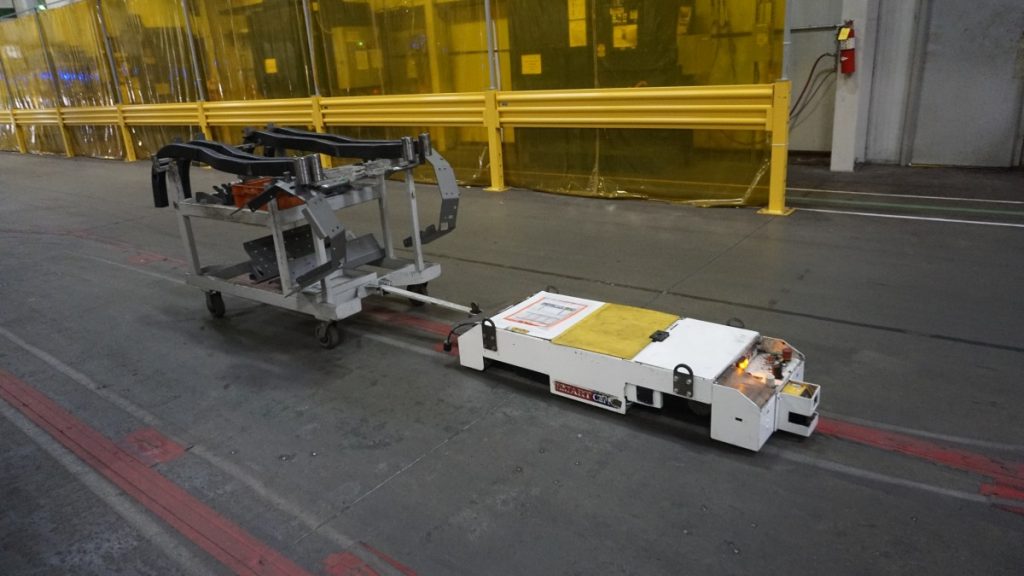
Those changes mean Kubota is training more of its workers on electronics, sensors and diagnostics, while also looking for ways to make the technology more intuitive for its customers.
One thing that hasn’t changed is Kubota’s approach to labor relations, which closely resembles other automotive companies that run large factories in the South. As auto plants in the Rust Belt languished in the face of foreign competition, Asian and European automakers built plants across southern Appalachia and the South, including in Kentucky, Tennessee, Alabama, Mississippi, South Carolina, Georgia and Texas. These manufacturers were attracted by generous government-provided incentives, low tax rates and the lack of union protections.
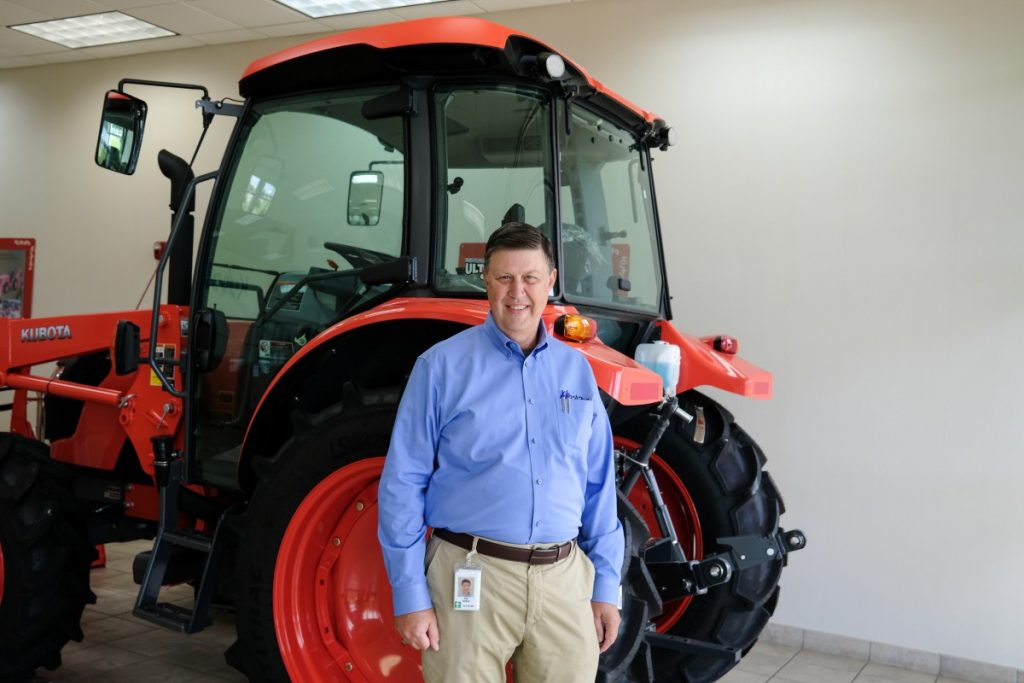
Kubota recognizes no unions in its Georgia plants. Phil Sutton, vice president of Kubota Manufacturing of America Corporation, said unions disrupt the factory’s “family” feeling by creating unnecessary conflicts. Although these companies’ paternalistic approach does provide steady pay and benefits, it leaves workers little recourse when conflicts do arise.
America’s Shifting Perception of Work
The deployment of new technology is often trumpeted in utopian terms, suggesting that increased productivity means people will work less and have more leisure time. But that’s not often what happens in reality. The arrival of the cotton gin in the 1790s resulted in a sharp increase in the number of slaves in the U.S., whose numbers rocketed from 700,000 in 1790 to 3.2 million in 1850. More than 100 years later, mountaintop surface mining made for safer working conditions, but it also caused a steep decline in employment, degraded water quality and devastated the physical landscape of central Appalachia.
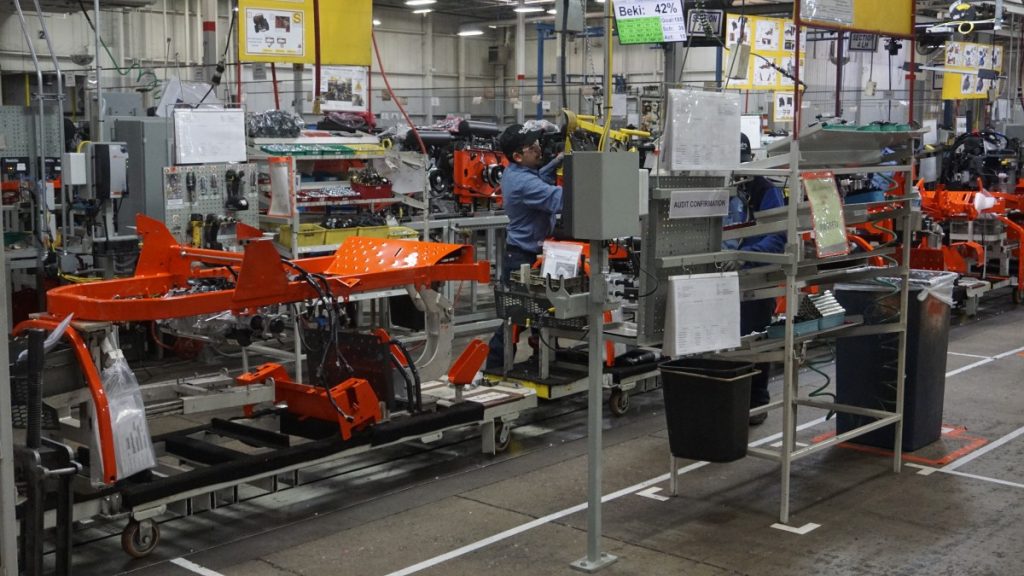
Ensuring that the developing technologies shaping the future of work benefit the American people, and not just the wealthy few, will require more just labor policies, as well as reframing how we think about work. That means breaking with the history of Southern labor, said Atlanta-based historian Keri Leigh Merritt. The South has relied on unfree labor for generations, whether indentured servants, slaves, inmates of jails and prisons, undocumented migrants or refugees.
“We’re looking at an oversupply of labor and an undersupply of jobs, particularly jobs that pay a living wage,” Merritt said. “Essentially what’s going to happen is that everyone in industrialized countries, especially the U.S., needs to work less. We’ll have to conceptualize what society looks like.”
As Appalachia — and rural America generally — continues a long-running transition to a service-based economy, that will mean paying better and providing benefits for what traditionally have been low-wage jobs, she said.
“With aging baby boomers, people wanting to stay in their homes longer and [with] rural hospitals closing, we’re going to have to have more people who work in health care, in nursing homes, in any kind of personal service,” Merritt said.
Ensuring just outcomes for everyone also means universal health care to support an aging population that struggles with high rates of comorbidities, such as diabetes, heart disease and substance use disorders. And it means recognizing the value of unpaid jobs, such as parenting and taking care of a dying parent or sick spouse.
“To make society not only happy but society function, these are things we need,” Merritt said.
Those kinds of shifts once seemed unthinkable. But as the coronavirus pandemic has shaken the global economy and rattled U.S. politics in a presidential election year, they are beginning to feel attainable.
This story is part one of a three-part series on the future of work in Appalachia. Read more from the project Disrupted here.



